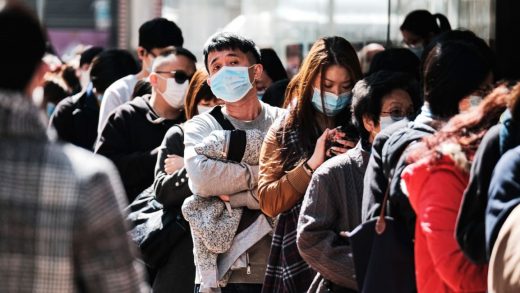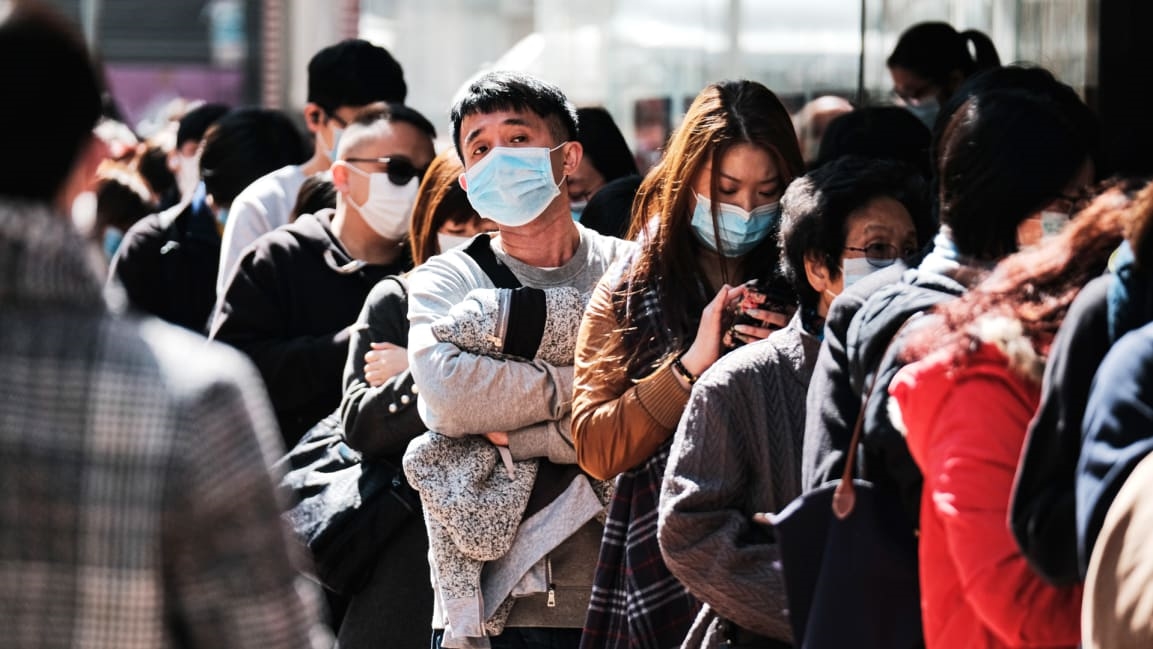The scariest part about the coronavirus? Misinformation
(February 04, 2020), the World Health Organization declared the coronavirus a global health emergency, a move that to some felt belated. Though the novel coronavirus only first emerged 31 days ago, there has been a public debate over whether China is taking an appropriate, transparent course of action. State information, news reports, and conspiracy theories have proliferated at such a rate that even public health researchers aren’t sure about what is true and what is not.
“When news travels so fast, it is difficult to then contain that information,” says Yulin Hswen, a researcher within a group at Boston Children’s Hospital that tracks disease and is working with both the Center for Disease Control and Prevention and the World Health Organization to understand how the virus is moving.
The virus first presented in Wuhan, China, as pneumonia. Because a large number of patients with the novel coronavirus had recently gone to the Huanan seafood market, it emerged as a possible source and the market was shutdown on January 1, 2020. However, a report published in The Lancet, a well-regarded peer-reviewed medical journal, found that of 41 cases studied, 13 were not associated with the market. “No epidemiological link was found between the first patient and later cases,” the report said. This sort of uncertainty around when and where the virus first struck is not abnormal. But it opened up an opportunity for conspiracy theorists to formulate an alternative narrative: that the Wuhan Institute of Virology had created this virus as a biological weapon. This notion has been shrugged off by scientists, who say that the virus occurs in nature and doesn’t appear to be engineered—and that a highly communicable virus does not make for good biological warfare.
When news travels so fast, it is difficult to then contain that information.”
Yulin Hswen
While health officials may be more deliberate in disseminating what they know, both credible news outlets and conspiracy theorists are attempting to shore up the gap in information. In 2020, content travels like a virus, creating a complicated landscape for both health officials and the general public.
“It’s almost like there’s too much information, and there’s a lot of unknown truth,” says Hwsen. There’s still a lot that is not known about the coronavirus.
Novel coronavirus 2019, also known as 2019 nCoV, has been most frequently compared to the outbreak of SARS, also a coronavirus, in 2003. “SARS was a black box,” Hswen says. There was very little information about the virus from the beginning. The first case happened in November 2002, but the World Health Organization didn’t call it a global health crisis until March 2003. With SARS, 305 cases of “atypical pneumonia” were reported in the first 135 days; in contrast, in the first 30 days since the initial case was reported in December 2019, there have been 7,921 confirmed cases of the 2019 coronavirus. It has also already moved far beyond China.
Unlike with SARS, there is a lot more information about this new coronavirus. Researchers have been able to sequence its genome, which will inform the development of a vaccine and provide insight into when it first occurred and how it is changing. There are only 100 cases outside of China, none of which have resulted in death. Much of the ultimate impact of the new coronavirus has yet to play out. The 2003 outbreak of SARS took eight months to contain and killed 774 people.
In response to the speed with which 2019 nCoV has sickened people in Wuhan, the Chinese government has decided to quarantine 50 million people. China has also quickly erected two temporary hospitals. Despite the haste the country has made in addressing the issue, many citizens have complained that state and local officials did not fully disclose the severity of the situation to the public early enough. China enacted a lockdown to prevent the disease from spreading, but 5 million people had already left the region. In addition, China’s deputy director general of information Lijian Zhao—and the Chinese state media—were caught spreading a false photo indicating the temporary hospitals were more complete than they were.
There are several reasons why information coming out of China has been slow and perhaps inaccurate. First, many people were planning to travel during the Lunar New Year holiday, including to and from Wuhan. In conversation with NPR this week, Dali Yang, a professor of Chinese politics at the University of Chicago, explained that members of the government may have been incentivized to project an air of calm in the first week of the year because of the holiday. “This is a vast bureaucratic system with many interests, so people have gotten into the habit very often of trying to . . . censor,” he said.
Another factor contributing to the incomplete data may have to do with how the virus is being tracked. “The Chinese are currently only testing people who are sick enough to seek medical care because they have pneumonia—a criterion that automatically excludes anyone on the mild end of the disease spectrum,” Stat News reported this week. People who have mild cases or who were sent home because the hospitals were too full may be overlooked, meaning the number of people infected with 2019 nCoV in China might be much higher than the official tally.
Still, the WHO has been very supportive of China’s efforts to contain the virus. Director General Dr. Tedros Adhanom Ghebreyesus, referred to as Dr. Tedros, has said that the country’s leadership has set a new standard around disease response.
It’s almost like there’s too much information.”
Yulin Hswen
However, there has been credible criticism of how China has handled the outbreak so far. “I’m very alarmed by reports that 5 million people have left Wuhan,” said scholar Jennifer Nuzzo, who works at the Johns Hopkins Center for Health Security, in an interview. She also raised questions about the quarantines, which she said can backfire and make the spread worse. These lines of inquiry are normal and an opportunity to raise red flags in an emerging situation. But they can also add to a flood of information around the coronavirus, not all of which is reliable.
Conspiracy theorists are publishing content questioning the origin of the virus, how far it’s spread, and how many people it has killed. The misinformation is proliferating not only in expected spaces like InfoWars, but also on TikTok, a social platform that typically hosts dance videos and memes. The Physicians for Civil Defense, a nonprofit organization run by vaccination skeptic Dr. Jane Orient, is also chiming in with press releases that suggest the virus may have been illegal biological warfare.
The WHO has been careful about its messaging despite its recent decision to declare a global health crisis. During a press conference, Dr. Tebros specifically and repeatedly said that the WHO does not support a halt on travel and trade in relation to the virus. However, much of this wave of misinformation about the coronavirus seems aimed at inciting a fear of China and pushing for closed borders.
As New York Times columnist Farhad Manjoo wisely notes, “It is worth remembering that disease, or the fear of disease, can bring out the worst in humanity—pandemics often feed scapegoating (Jews were widely blamed for the Black Death), creating a fertile field for demagogues.” Such a panic may already be taking hold.
This is the time for science, not rumors.”
Tedros Adhanom Ghebreyesus
(February 04, 2020), a union representing 15,000 pilots sued American Airlines, asking for a temporary restraining order on flights between the U.S. and China. The airline plans to suspend flights from Los Angeles to Shanghai and Beijing starting in February. Around the world, airlines have also seen a drop in demand for flights to China, causing many carriers to cancel flights. As of Friday, Air France and British Airways have suspended flights to mainland China. Prior to these various travel restrictions, China had already halted much travel as part of its lockdown. Online, some people are taking to Twitter to pressure governments to close their borders to travelers; others are starting petitions to prevent Chinese travelers from coming to the U.S. In other countries, hashtags and headlines with xenophobic overtones are trending, according to the New York Times.
Google, Facebook, and Twitter have taken steps to redirect people to credible sources of information, like the CDC website. But capturing every instance of misinformation is not easy and videos and other content slip through.
That’s made the constant eruption of stories related to the coronavirus confusing, even for researchers. Dr. Tebros noted that among important next steps, countries must combat misinformation on the virus. “This is the time for science, not rumors,” he said during a press conference.
Stopping the spread of misinformation may be the most crucial task ahead. Because it is still early days, it is difficult to know what shape the virus will take over the next few months, but much has been done already to contain it. The WHO is worried that weaker health systems will not be able to handle the outbreak, should it reach them. If that happens, it will require global cooperation, not further isolation.
(34)



